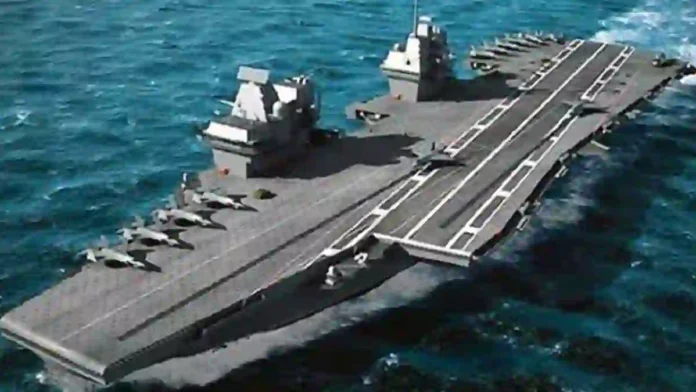Source- AFI
The race for naval supremacy in Asia is heating up as more countries join the fray, seeking to expand their maritime capabilities and enhance their strategic influence. While India and China have been the focal points of this competition, several other Asian nations are now entering the arena with ambitious aircraft carrier programs. These developments underscore the region’s shifting power dynamics and the growing importance of naval strength in securing national interests.
India and China are at the forefront of the aircraft carrier race in Asia, each with substantial investments in expanding their carrier fleets
India’s naval ambitions have led to the commissioning of INS Vikrant, its second aircraft carrier. in 2022. The Indian Navy also operates INS Vikramaditya, a modified Kiev-class carrier India is reportedly planning to build a Bigger and more advanced carrier. which will likely feature an Electromagnetic Aircraft Launch System (EMALS) and possibly nuclear propulsion,
China has made significant strides in developing its carrier capabilities. It currently operates two carriers Liaoning, a refurbished Soviet vessel, and Shandong, its first domestically built carrier. China is also constructing a third carrier known as Type 003 which will be larger and more advanced featuring EMALS and enhanced capabilities. There are speculations about future carriers. Including nuclear-powered ones to further strengthen the People’s Liberation Army Navy (PLAN)
Several other Asian countries are now pursuing aircraft carriers, reflecting their strategic aspirations and the need to counter regional threats
Japan
Japan, with its maritime self-defense force has ambarked on converting its izumo class helicopter destroyers into light aircraft carriers capable of operating F-355 fighter lets. This move, facilitated by Japan’s revised defense policies aims to enhance its defensive and power projection capabilities in response to China’s expanding naval presence
South Korea
South Korea has announced plans to build its first aircraft carrier, the CVX. The CVX will be a light carrier designed to operate F-35B jets, focusing on enhancing South Korea’s ability to respond to regional security threats, particularly from North Korea and China. The carrier is expected to be operational by the early 2030s.
Read- GOOGLE TO MANUFACTURE DRONES IN TAMIL NADU, MAY EXPORT IT TO US, AUSTRALIA, OTHERS
Thailand
Thailand operates a modest aircraft carrier. HTMS Chakri Naruebet, primarily used for disaster relief and training purposes While not as advanced as other carriers in the region, it represents Thailand’s capability to project power and respond to regional contingencies
Indonesia
Indonesia has shown interest in developing its carrier capabilities as part of its broader military modernization efforts. Although specific plans have not been detailed Indonesia’s strategic location and growing regional influence make an aircraft carrier a logical addition to its naval fleet in the future
The Asian aircraft carrier race is evolving, with India and China leading the way and other nations like Japan, South Korea, and Indonesia joining the competition. This trend underscores the growing importance of naval power in regional security dynamics and highlights the strategic imperatives driving countries to enhance their maritime capabilities. As more Asian nations develop and deploy aircraft carriers, the region’s naval landscape will continue to transform, influencing the balance of power and the nature of security interactions in the Indo-Pacific
(With Agency Inputs)




